Saturday, February 8, 2014 / 1 p.m.
Misled by Nature curator Josée Drouin-Brisebois and artist Tricia Middleton
Presented at Edward Day Gallery
Misleading Questions: Discussion on contemporary culture, thought, and phenomena in an era of excess.
First to step to the podium was Artistic Director David Liss who introduced MOCCA’s exciting partnership with the National Gallery of Canada and the Art Gallery of Alberta. The show, Misled by Nature, was then expounded and eloquently explained by curator Josée Drouin-Brisebois, Senior Curator of Contemporary Art at the National Gallery of Canada, in Ottawa.
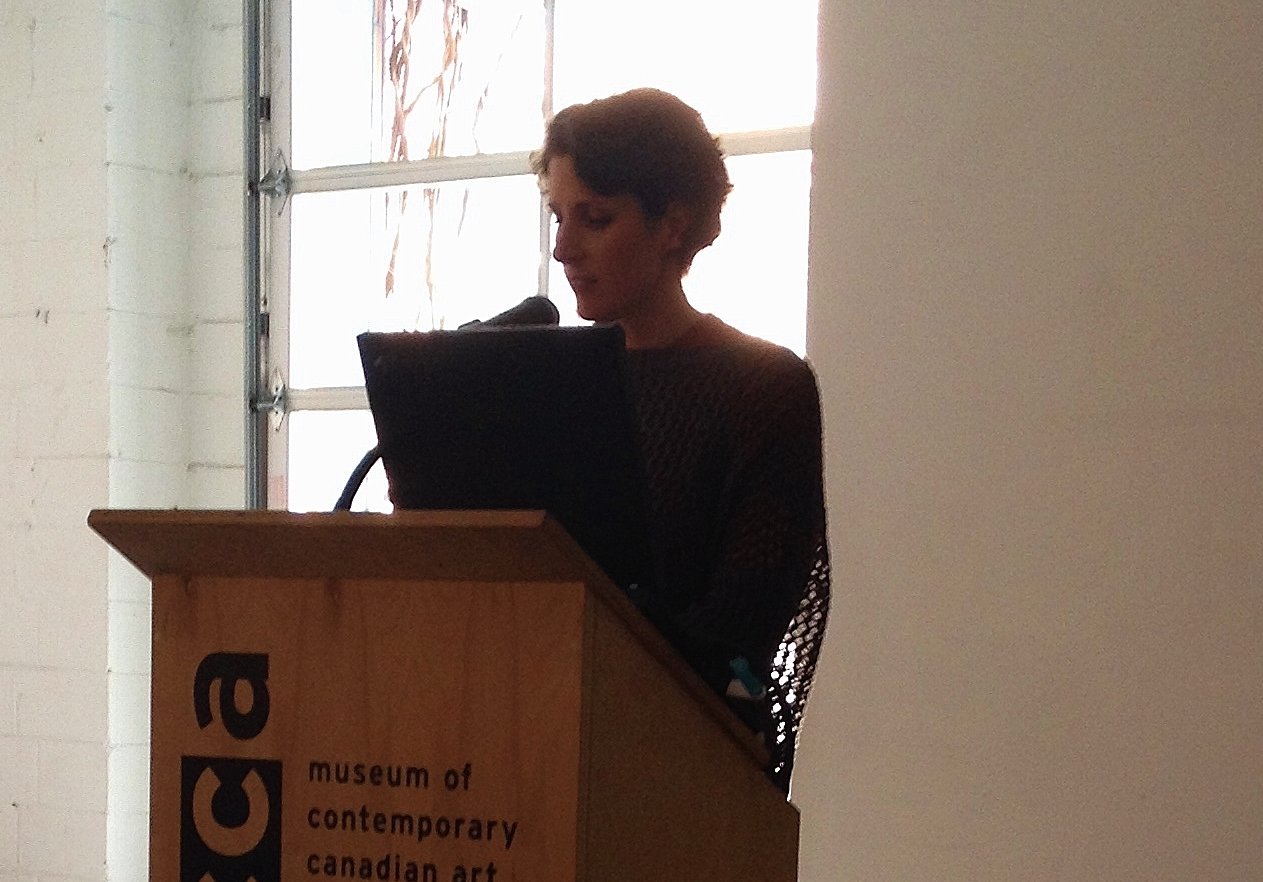 Josée Drouin-Brisebois, Senior Curator of Contemporary Art at the National Gallery of Canada, in Ottawa
Josée Drouin-Brisebois, Senior Curator of Contemporary Art at the National Gallery of Canada, in Ottawa
These artists, she claims, use different materials to create their own visual language. Moreover, they each draw upon aspects of the historical Baroque including, “material excess, accumulation, bravado, theatricality and the construction of immersive, emotive (and sometimes unsettling) environments.” The artists’ individual languages are inspired by the many ways in which nature behaves. They vary from the organic, the expansive and the microscopic and it is tangible in how they transform the mundane and create the profound.
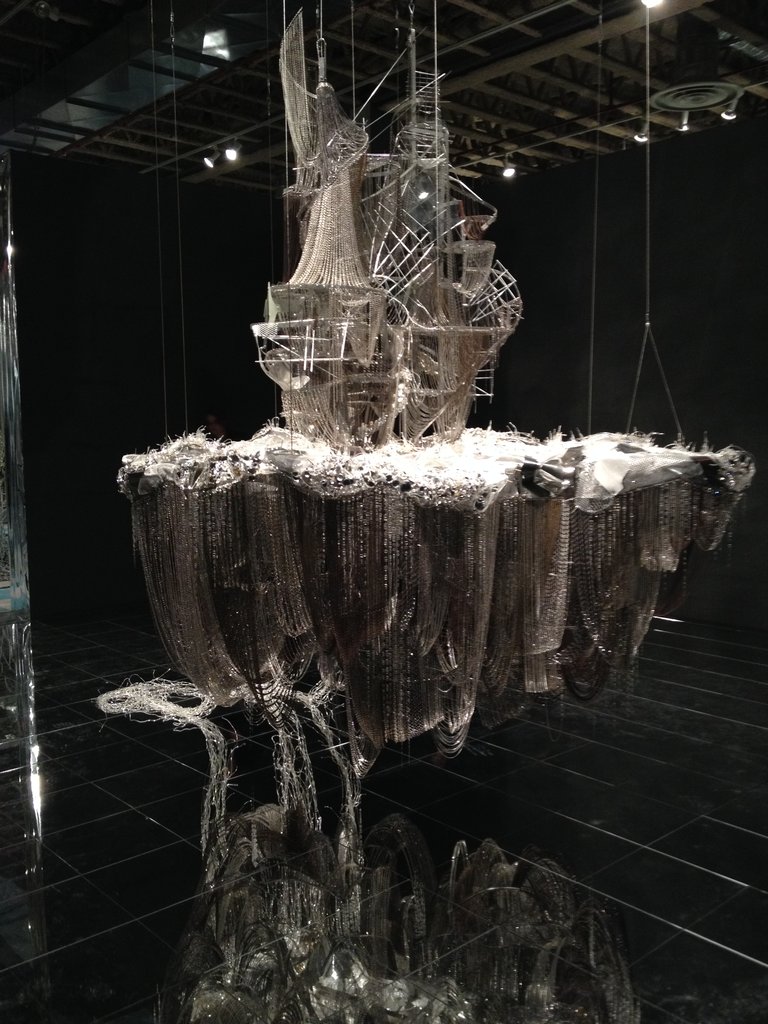 Lee Bul, After Bruno Taut (Negative Capability), 2008. Crystal, glass, and acrylic beads on stainless steel armature with aluminum and cooper mesh with chains made of PVC steel and aluminum. The installation references Bruno Taut’s lyrical book Alpine Architektur (1919), in which the early-20th-century German architect proposes a utopian city built of glass, floating in the cosmos. Here, his vision is translated into a decorative structure fabricated from lengths of cheaply-made jewellery.
Lee Bul, After Bruno Taut (Negative Capability), 2008. Crystal, glass, and acrylic beads on stainless steel armature with aluminum and cooper mesh with chains made of PVC steel and aluminum. The installation references Bruno Taut’s lyrical book Alpine Architektur (1919), in which the early-20th-century German architect proposes a utopian city built of glass, floating in the cosmos. Here, his vision is translated into a decorative structure fabricated from lengths of cheaply-made jewellery.
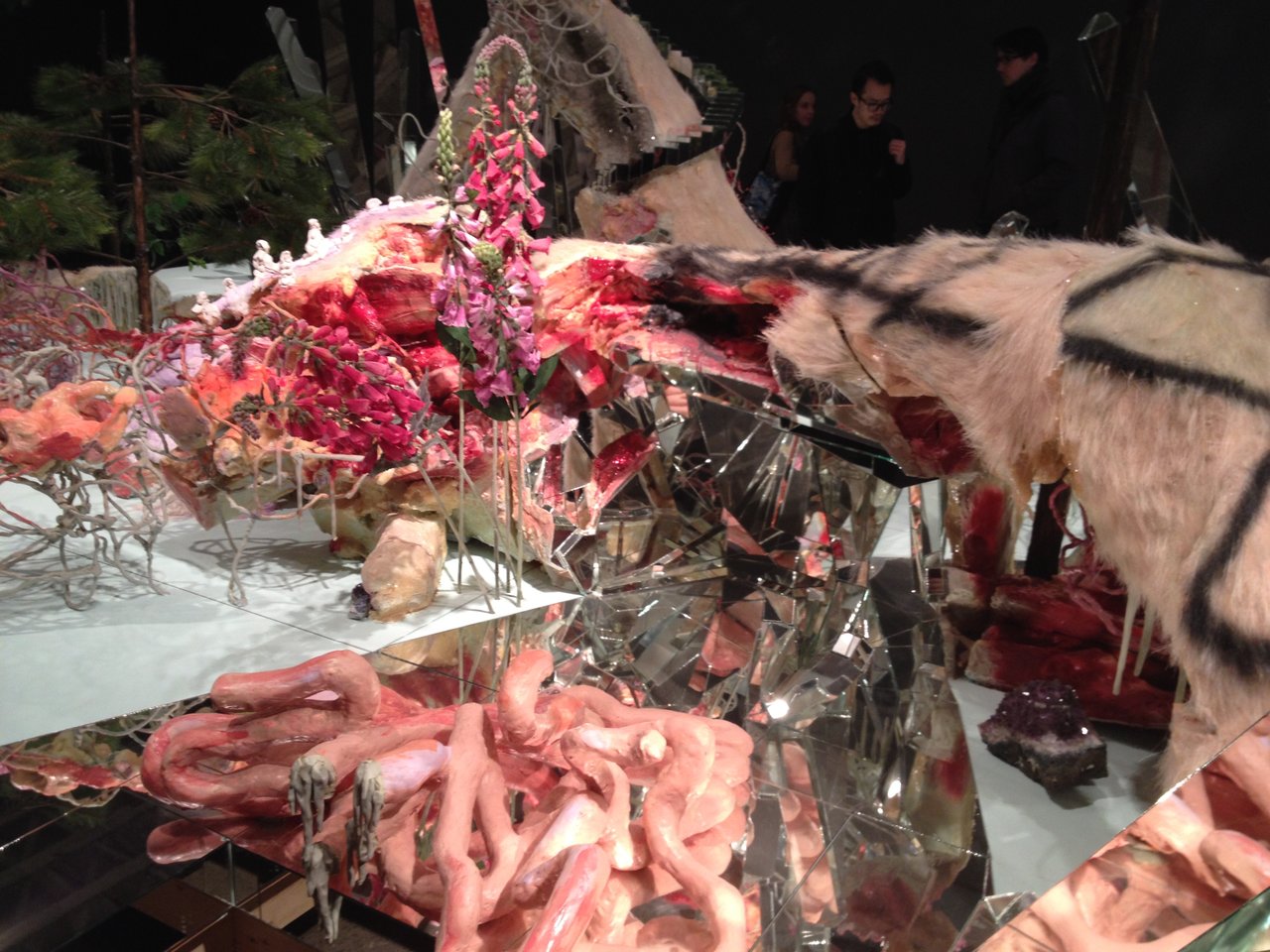 Detail of David Altmejd’s, The Holes, 2008. Wood, mirror, glue, plaster, foam, metal wire, epoxy clay, epoxy resin, horsehair, synthetic branches, synthetic flowers, pine cones, glass beads, quartz, quail eggs, glitter, and snail shells. This display with organs from a gigantic human and beast could be seen as an altar with offerings.
Detail of David Altmejd’s, The Holes, 2008. Wood, mirror, glue, plaster, foam, metal wire, epoxy clay, epoxy resin, horsehair, synthetic branches, synthetic flowers, pine cones, glass beads, quartz, quail eggs, glitter, and snail shells. This display with organs from a gigantic human and beast could be seen as an altar with offerings.
In addition, artist Tricia Middleton explained her work by “making a baroque emblem out of tidbits [in essence, a glossary]” with words such as existence, oneiric space, horror, etc. in a nonlinear and scattered manner.
Although her vision is clear and evident in her artistic practice, her talk, on the contrary, was disorderly and jumbled. She spoke as her thoughts came to her mind, and laid her inspirations and thought-process bare in an uncensored, and entertaining, manner. Among these inspirations, she mentioned the destructive and regenerative cycle of life present in nature such as: grafting, decay, accretion, decomposition, and rebuilding, repurposing (ex: cannibalizing elements of her Dark Souls, 2009 for her current installation). In addition, she credits Baroque church architecture, the bloodshed and ruin during the French Revolution, bacteria, and oneiric spaces as thought-provoking muses.
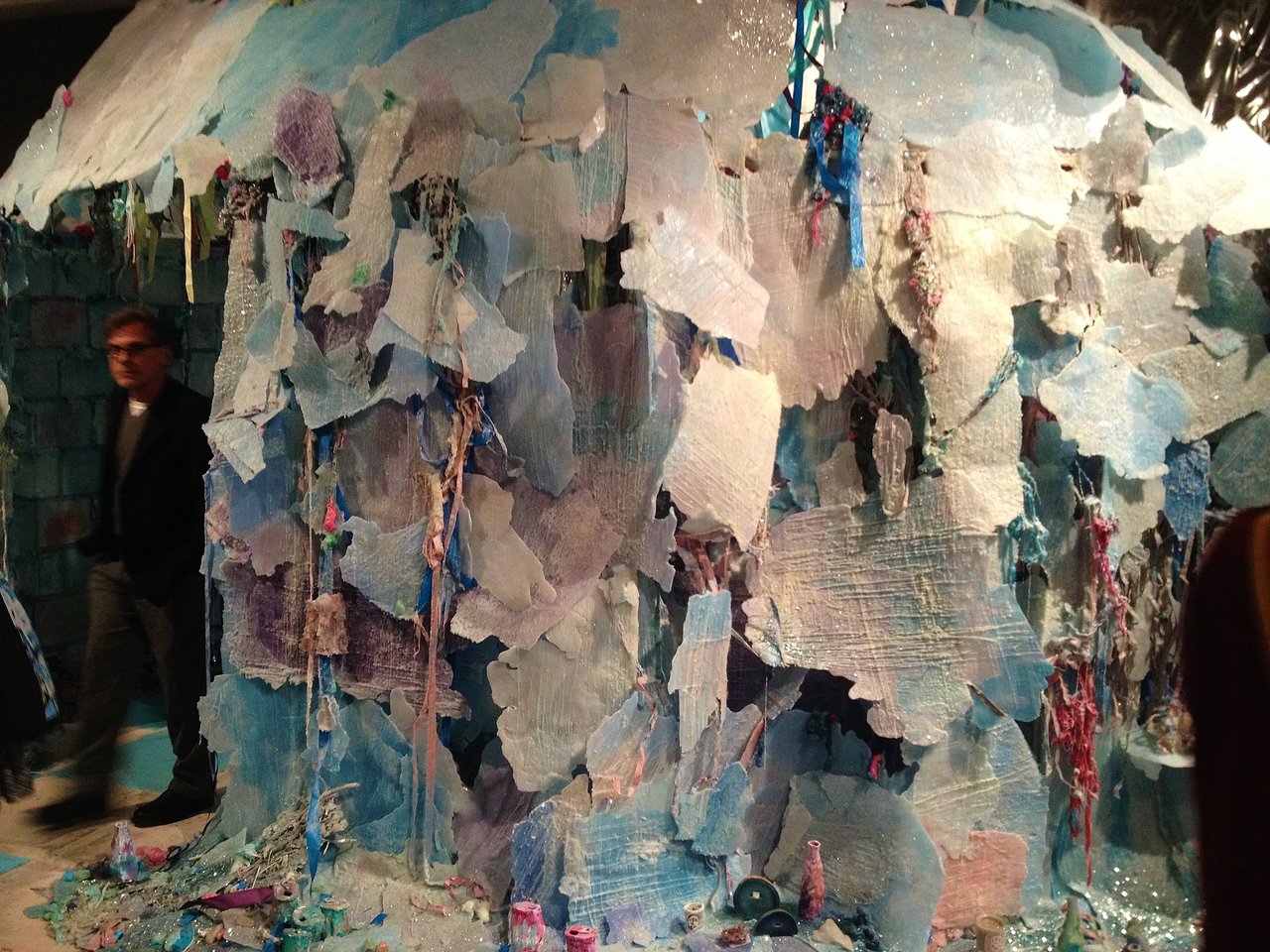 Tricia Middleton, Embracing oblivion and ruin is the only way to live now, 2014. Mixed media installation.
Tricia Middleton, Embracing oblivion and ruin is the only way to live now, 2014. Mixed media installation.
 Tricia Middleton, Embracing oblivion and ruin is the only way to live now, 2014. Mixed media installation. Deatil from inside
Tricia Middleton, Embracing oblivion and ruin is the only way to live now, 2014. Mixed media installation. Deatil from inside
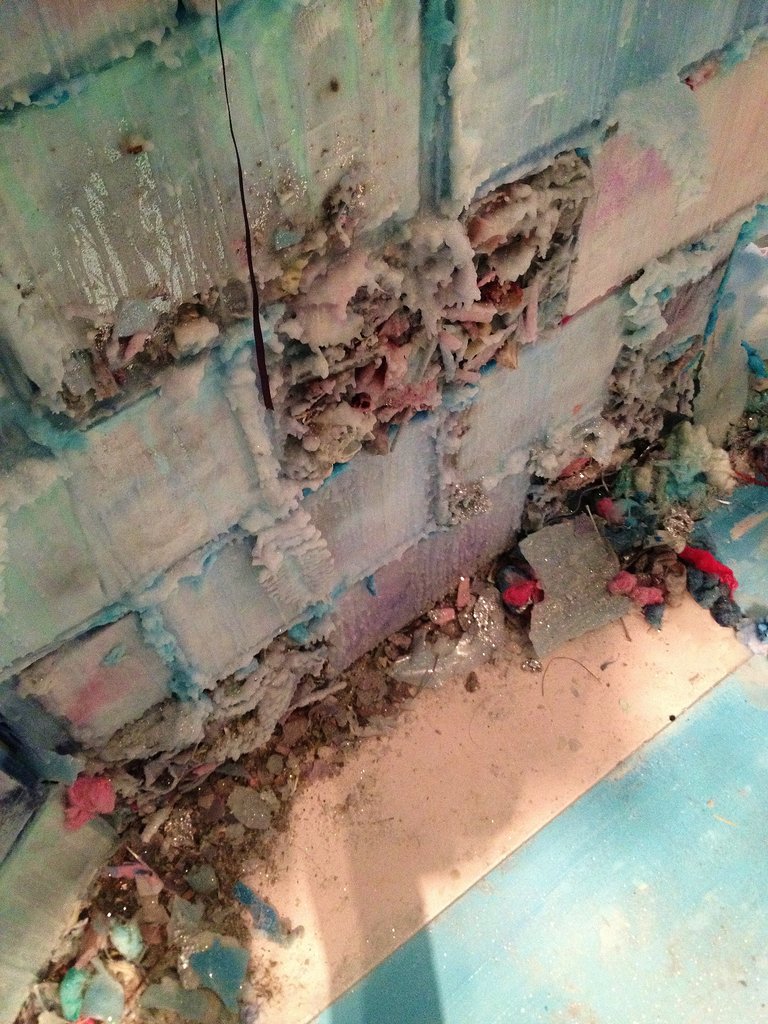 Tricia Middleton, Embracing oblivion and ruin is the only way to live now, 2014. Mixed media installation. Detail of the outer wall
Tricia Middleton, Embracing oblivion and ruin is the only way to live now, 2014. Mixed media installation. Detail of the outer wall
Together, Drouin-Brisebois and Middleton make clear that Misled by Nature is a collection of artworks that draw from historical Baroque characteristics in order to address contemporary curiosities, which tangibly manifests itself by resurrecting mundane materials and transforming them into immersive and emotive environments that challenge their viewer to contemplate, reflect, and (potentially) create.
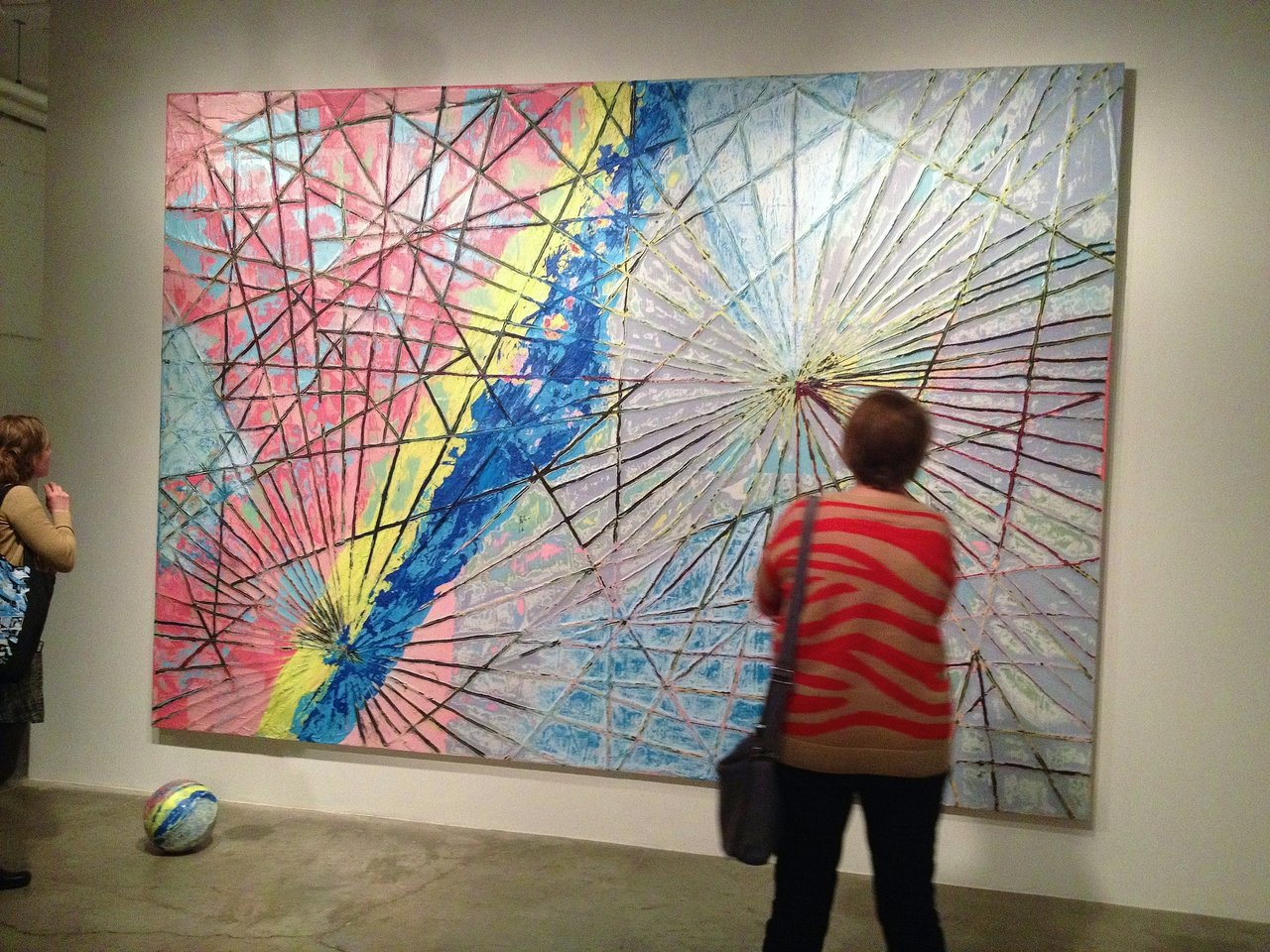 Mark Bradford, Africa, 2013. Mixed media on canvas, paper maché (from Joan Blaeu’s Atlas Major, 1662-65, an 11-volume opus that plotted out the whole world) and collage; 2 parts. The piece is based on an image of the continent as it appears on the page for a Dutch trade route, of note as Holland was highly involved in the slave trade at the time.
Mark Bradford, Africa, 2013. Mixed media on canvas, paper maché (from Joan Blaeu’s Atlas Major, 1662-65, an 11-volume opus that plotted out the whole world) and collage; 2 parts. The piece is based on an image of the continent as it appears on the page for a Dutch trade route, of note as Holland was highly involved in the slave trade at the time.
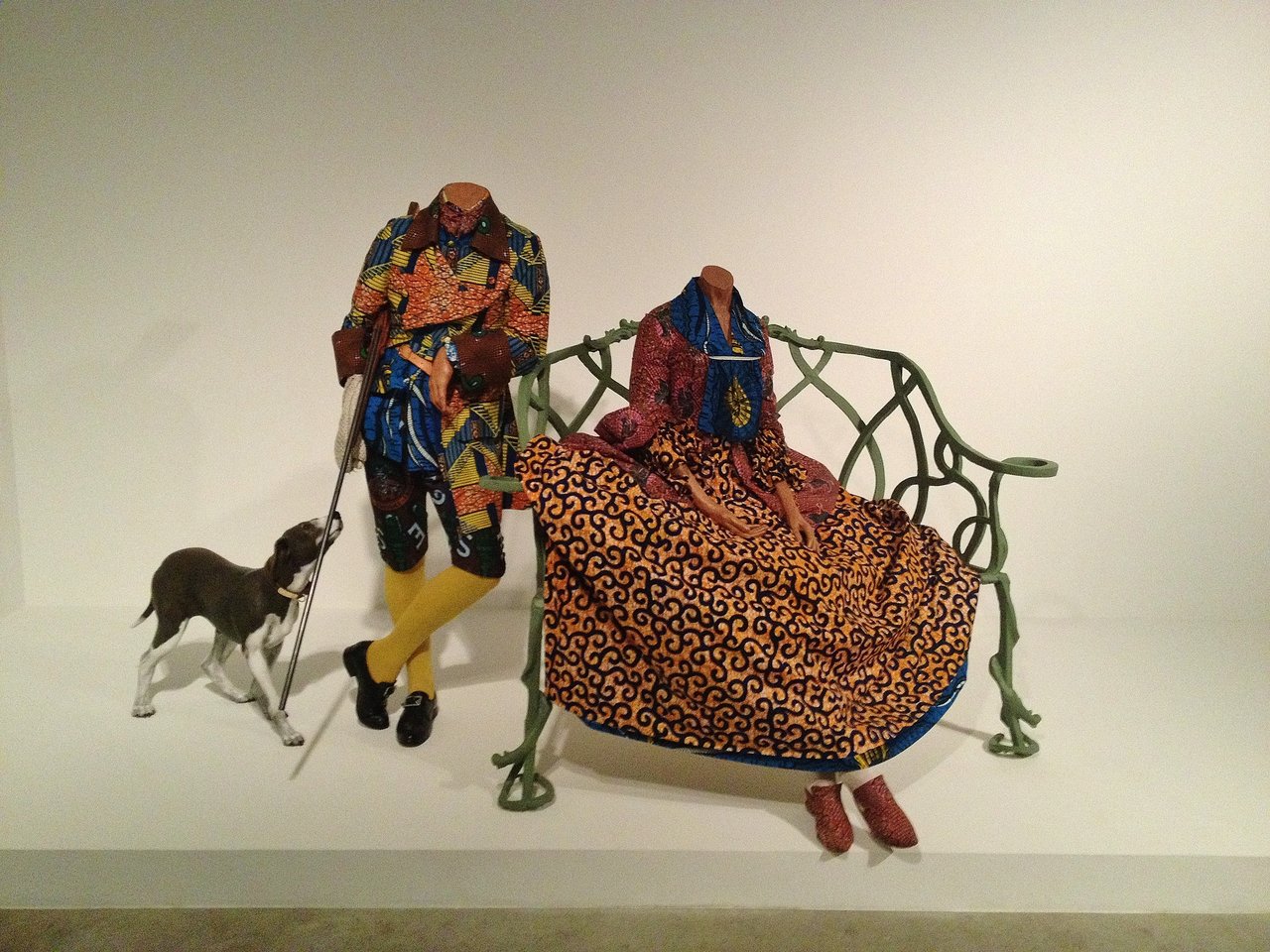 Yinka Shonibare, Mr. and Mrs. Andrews without their Heads, 1998. Wax-print cotton costumes on mannequins, dog mannequin, painted metal bench and rifle (sculptural rendition of Thomas Gainsborough’s painting Mr. and Mrs. Andrews c.1750). The colorful fabrics originated in Indonesia and were later mass-produced by Dutch traders. Today, the cloth is designed and manufactured in Manchester, England, exported to Africa, then sent back to Britian again, where it sells as an original African product.
Yinka Shonibare, Mr. and Mrs. Andrews without their Heads, 1998. Wax-print cotton costumes on mannequins, dog mannequin, painted metal bench and rifle (sculptural rendition of Thomas Gainsborough’s painting Mr. and Mrs. Andrews c.1750). The colorful fabrics originated in Indonesia and were later mass-produced by Dutch traders. Today, the cloth is designed and manufactured in Manchester, England, exported to Africa, then sent back to Britian again, where it sells as an original African product.
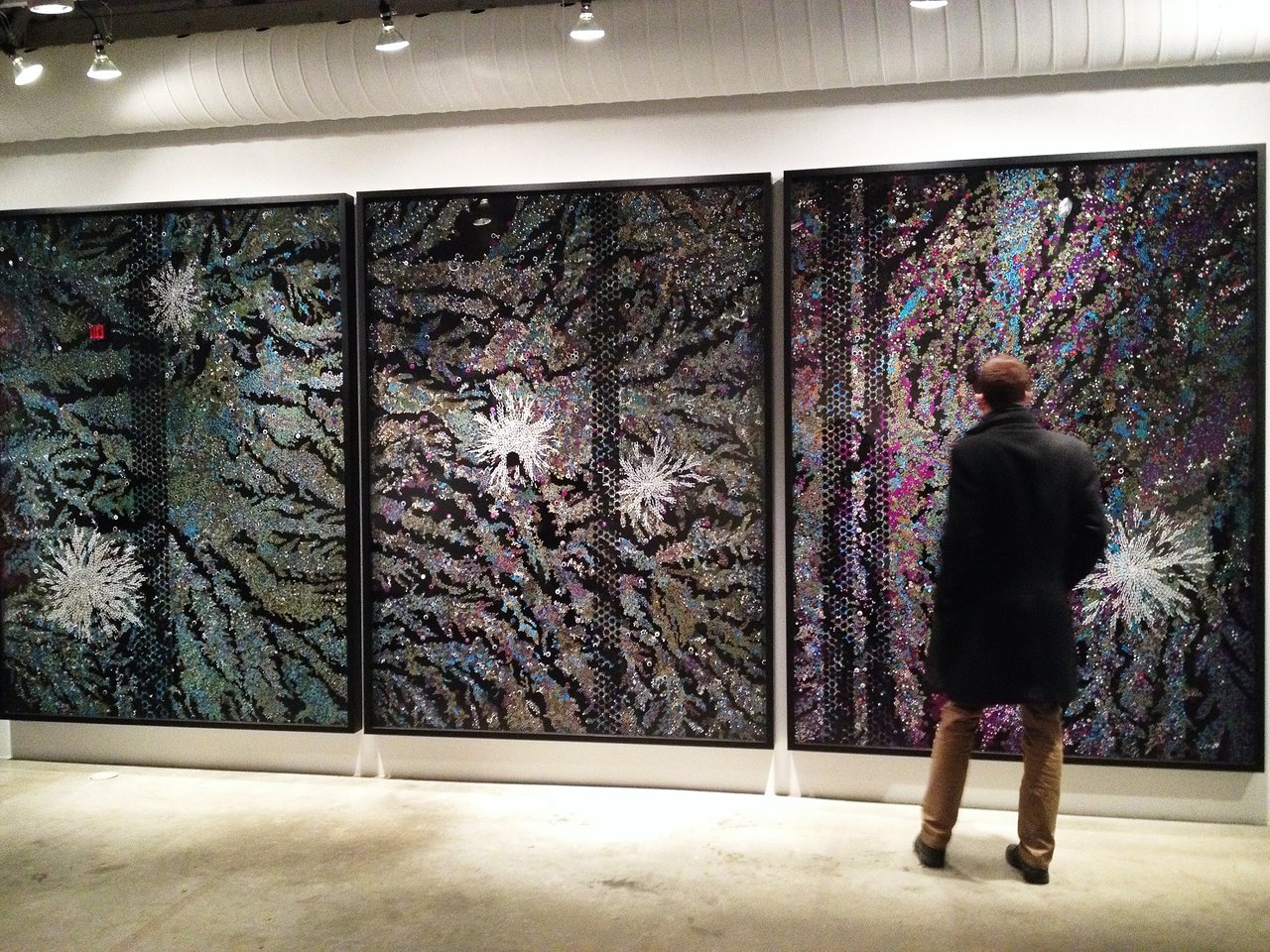 Bharti Kher, Nothing marks the perimeter just a hollow sound echoes, 2011. Bindis on painted board.
Bharti Kher, Nothing marks the perimeter just a hollow sound echoes, 2011. Bindis on painted board.
Text and photo: Leanne Simaan
*Exhibition information: Misled by Nature: Contemporary Art and the Baroque. February 8 – April 6, 2014, Museum of Contemporary Canadian Art, 952 Queen Street West. Gallery hours: Tue – Sun: 11 – 6 p.m.

